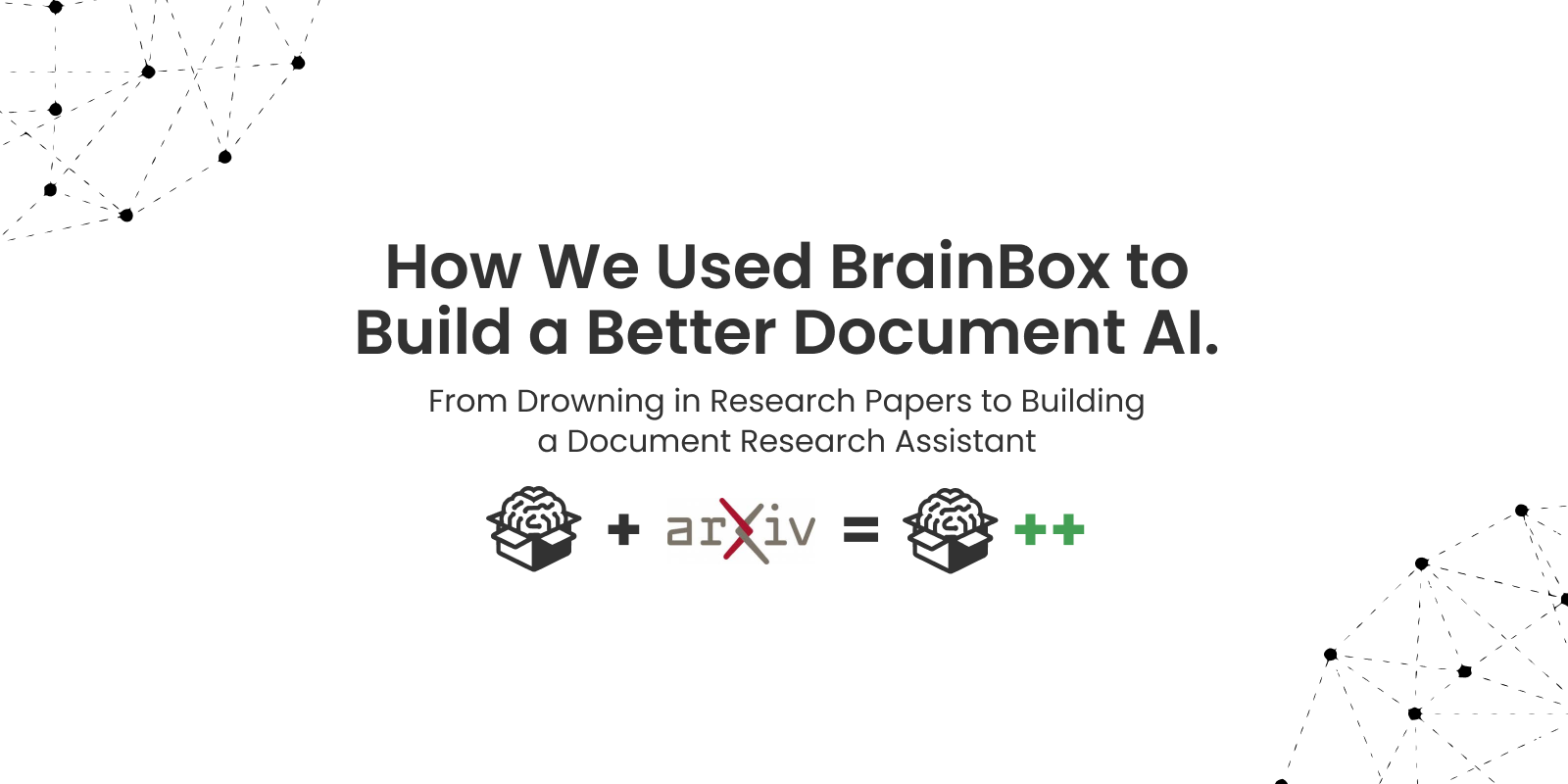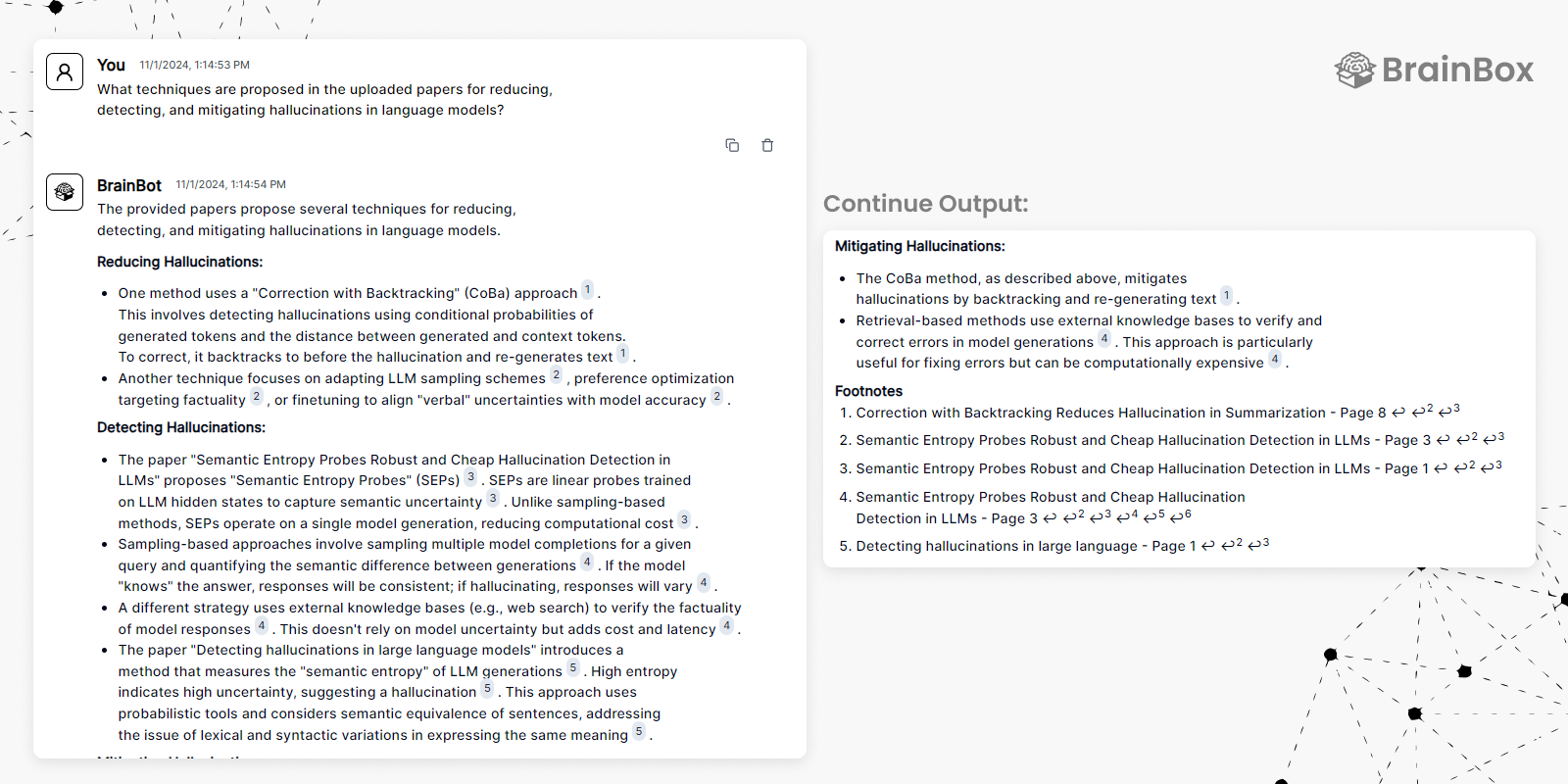How We Used BrainBox to Build a Better Document AI: A Developer's Journey
 Juan Lopez
Juan Lopez
As the lead developer of BrainBox, I want to share an honest story about how we're building a document AI that actually delivers on its promises. No marketing fluff—just real experiences, challenges, and solutions.
The Research Challenge That Started It All
Every AI developer knows the struggle: you're drowning in research papers, each potentially crucial to your project. I'd find myself with dozens of browser tabs open, random links saved in notes, and PDFs scattered across my devices. Worse, I'd spend hours reading papers only to realize they weren't relevant due to incompatible hardware specifications or evaluation methods.
The existing solutions weren't cutting it. While ChatGPT is impressive, it couldn't provide reliable references and sometimes generated fictional information. Plus, there was no way to maintain a persistent knowledge base of documents that I could reference consistently.
Developing BrainBox by Using It Ourselves
We decided to use our own tool during development—not because it makes for a nice story, but because we desperately needed a solution. Here's what actually worked:
Quick Relevance Assessment
Instead of spending hours reading each paper, we now upload documents to our R&D box and ask targeted questions about methodology, hardware requirements, and evaluation metrics. What used to take hours now takes minutes. We can quickly identify and remove irrelevant papers, keeping our research focused and efficient.
Mobile-First Research
As a developer, some of my best research happens outside the office. I used to save links to "read later" (let's be honest—they rarely got read). Now, I can upload papers directly from my phone and ask specific questions on the go. The mobile web app has transformed how I handle impromptu research moments.
Web Integration for Context
When papers use unclear terminology or reference concepts we need to explore further, we activate web mode to pull in additional context. This hybrid approach—combining our document base with web research—helps fill knowledge gaps without switching tools.
Real Numbers and Limitations
Let's be transparent about what BrainBox can and cannot do:
Current Capabilities:
Document Capacity: Each box in the BrainBox for Everyone version handles up to 1,000 documents (Technically way more, but that's the largest amount we have tested so far)
Our R&D Space: Currently processing ~100 carefully curated research papers
Processing Time: Document relevance assessment typically takes 2-3 minutes versus hours of manual reading
Known Limitations:
While we always provide citations, there's still a small but non-zero chance of hallucination—we're actively working to eliminate this
Currently text-only processing: Charts, images, and visual data are not yet analyzable (though this feature is in development)
Some complex technical concepts require multiple queries to fully understand
The Development Process
We work closely with users throughout development. Instead of making assumptions, we:
Continuously gather feedback on real use cases
Prioritize accuracy over speed
Focus on document AI excellence rather than trying to be everything to everyone
Looking Forward
We're building BrainBox to be the tool we wished existed when we started this journey. While we're proud of how it helps manage research and development documentation, we're even more excited about the improvements in our pipeline.
Rather than ending with a sales pitch, I'll share this: if you're drowning in technical documentation or research papers, we'd love to hear about your challenges. Our development is driven by real problems, not market trends.

Ready to Transform Your Document Research?
Experience BrainBox for yourself at app.brainbox.com.co. We built it to solve real problems for people who work with documents every day—researchers, developers, and knowledge workers who need better tools for handling complex information.
No grand promises, just a straightforward tool that helps you understand your documents better and faster. Try it out and let us know how we can make it work better for your needs.
— Juan Lopez, Lead Developer
Note: Want to learn more about our development journey or share your document processing challenges? Let's have a real conversation about it.
Subscribe to my newsletter
Read articles from Juan Lopez directly inside your inbox. Subscribe to the newsletter, and don't miss out.
Written by
